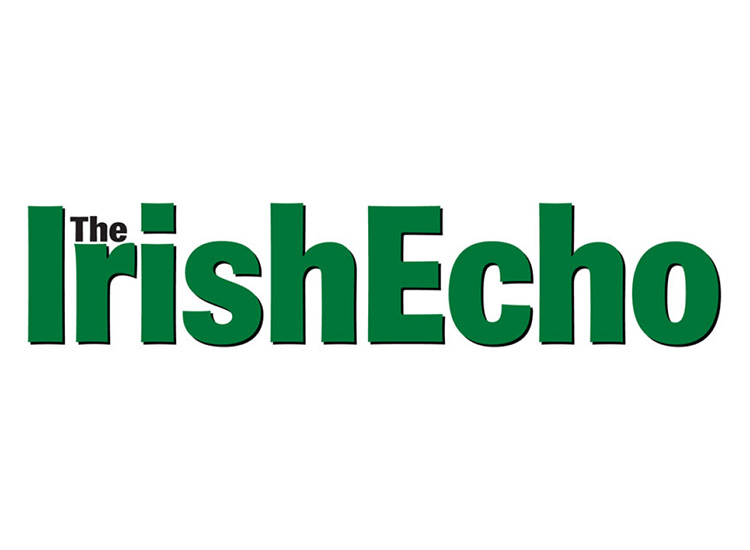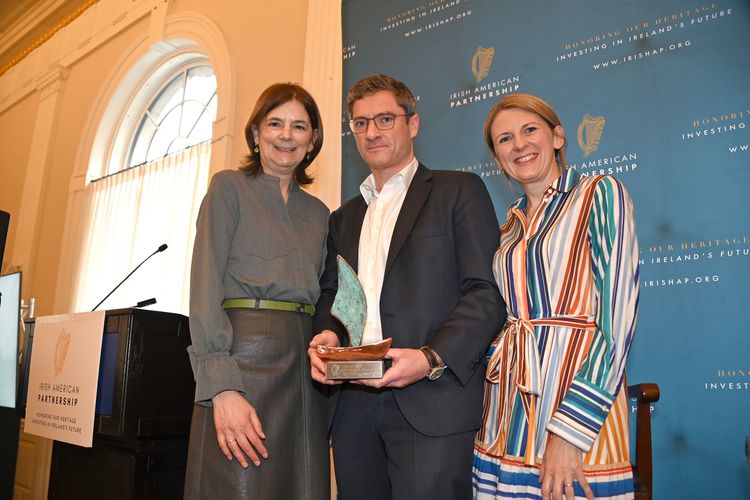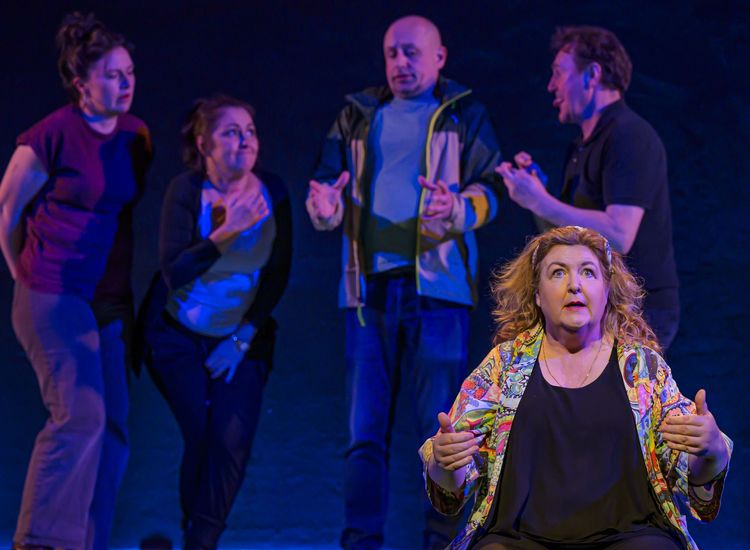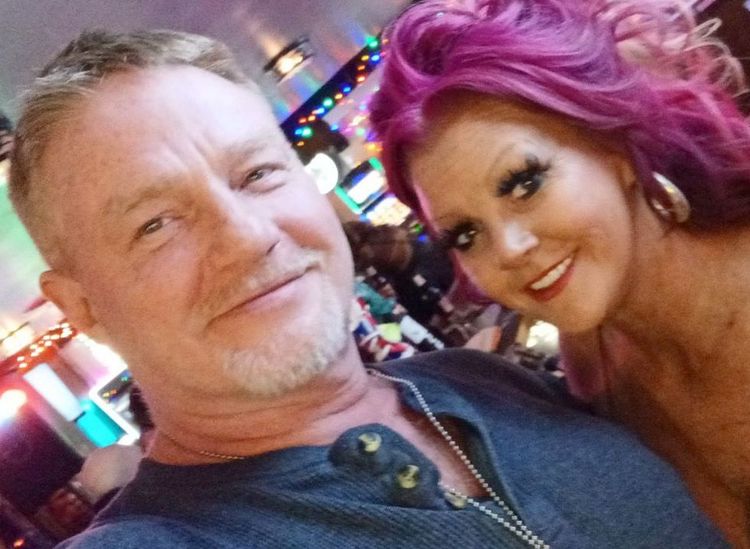“Being Irish, Being New York” is a celebration of 25 years of Glucksman Ireland House
By Terry Golway
Of the many amazing achievements of Glucksman Ireland House, perhaps the most astonishing is this: there never really was a plan. There was an idea. A hunch. A suspicion that if you built a serious academic institution devoted to the study of all things Irish and Irish-American, they would come.
They would come to hear poetry and music, come to hear academics and journalists, come to celebrate and interrogate what it means to be Irish in New York.
They came, all right. Lew Glucksman and Loretta Brennan Glucksman knew what they were doing when they persuaded New York University to create what became the center of Irish studies in the heart of the city so many Irish have called home.
Lew and Loretta didn’t necessarily need a plan. All they needed was a space, the necessary resources, and, well, a bit of faith, too. Everything else - the conversations, the inquiries, the research, the audiences and, most important, the students - followed in good order.
The House has been commemorating its 25th anniversary this year. Those of a certain age who recall seeing Seamus Heaney and Albert Reynolds and Maureen O’Hara and James Galway at the opening ceremony will have a hard time processing the undeniable fact that, yes, a quarter-century has come and gone.
So it has. And to mark the occasion, Irish Academic Press has published a book of essays entitled “Being New York, Being Irish: Reflections on Twenty-Five Years of Irish America and New York University’s Glucksman Ireland House.”
It’s a good book, lavishly illustrated and superbly written. But I have to confess I’m a little prejudiced. I was honored to serve as the book’s editor.
But if you’re inclined to write off my opinion as hopelessly compromised, allow me to introduce you to some of the essayists. You may have heard of them – Alice McDermott, Colum McCann, Colm Toibin, Maureen Murphy, Dan Barry, Marion Casey, Paul Muldoon, Billy Collins and an obscure novelist named Peter Quinn.
Wait, there’s more: Hasia Diner, John Connolly, Patricia Harty, Ray O’Hanlon, Miriam Nyhan Grey, Ellen Kelly O’Brien, Gina Marie Guadagnino, and the former director of Glucksman Ireland House, Joe Lee. Irish president Michael D. Higgins offered up an introduction.
The Irish ambassador to the U.S., Dan Mulhall, wrote about the enduring ties between Ireland and America. NYU’s president Andrew Hamilton talked about the institution’s place as a center for research and inquiry. And the book ends with a Seamus Heaney poem written not long before his death in honor of the House’s patron and champion, Loretta Brennan Glucksman.
That’s some pretty serious intellectual firepower, and it has been mobilized on behalf of the idea that created the space that supported the writing and the music and the thinking that have been a hallmark of Glucksman Ireland House since the day they cut the ribbon in 1993.
More than anything else, though, the book is a chronicle of epic transformation on both sides of the Atlantic as the 20th century gave way to the 21st. When the program’s original faculty members, historian Bob Scally and literary critic Denis Donoghue, delivered their first lectures, the war in the north of Ireland showed few signs of ending, Frank McCourt was best known as Malachy’s brother, the phrase “marriage equality” hadn’t been coined, and the presence of a woman, Mary Robinson, as the main tenant in Aras an Uachtarain was considered something of a fluke. The first steps of Riverdance had yet to be taken, Seamus Heaney’s friends were beginning to wonder if he would ever get a call from the Swedish Academy, and nobody really knew how the Irish saved civilization.
All changed, utterly.
The essays in “Being New York, Being Irish” deal with the transformations, disruptions, and the continuities in Irish-American life beginning in the late 20th Century. Colm Toibin recalls a memorable St. Patrick’s Day in New York in 1989, when a woman, Dorothy Hayden Cudahy, led the march for the first time. Ray O’Hanlon explains how the new Irish Americans of the 1980s brought energy and change to Irish culture in the United States. Gina Marie Guadagnino reflects on Irish mythology from a feminist perspective. Hasia Diner describes how the study of Irish history illuminates the history of other non-Anglo Saxon groups in America.
The history of the House itself coincided with a revival in things Irish that few saw coming in 1993. The House was still in its infancy when Frank McCourt won a Pulitzer for “Angela’s Ashes,” Alice McDermott won a National Book Award for “Charming Billy” and Seamus Heaney won his long-anticipated Nobel Prize. They and other artists, from Jean Butler to Terry George, Mick Moloney to Eileen Ivers, provided Irish America with energy and excitement as they explored new artistic territory and asked provocative questions about old assumptions.
Part of the brilliance of Glucksman Ireland House is that it retains warm ties with and due deference for those who have kept the tradition alive: the county societies, the immigrants from mid-century, while collaborating with writers and artists who are finding new ways of expressing their Irish identity.
That’s true of the book as well: It offers respect for the past while focusing on change, anticipating that the next 25 years will be as remarkable and exciting as the last 25.
An aging editor has just one request: Can the next 25 years move along at a slightly slower pace?
Please?
“Being New York, Being Irish” can be purchased on Amazon and also directly from the publisher, www.irishacademicpress.ie.










